Abstract
Immunofluorescence (IF) and radioimmunoassay (RIA) have been compared as methods for detecting IgM antibody in 124 infants with confirmed or suspected congenital rubella. IF was used to test sucrose density gradient fractions and RIA to test fractions and whole serum. When fractions were tested IF and RIA were equally specific and distinguished clearly between IgM and IgG, but RIA was the more sensitive method. The RIA titre in whole serum was always greater than in the peak IgM fraction and there was no evidence that testing the serum, rather than the fraction, could result in failure to detect IgM. With some sera RIA gave low titres which became negative after absorption with IgG-coated latex beads. The mechanism of this 'false positive' effect, which may have been due to IgM with anti-IgG activity, was not investigated, but if it can be removed by absorption it need not reduce the specificity of the test. During the first 6 months of life IgM antibody was detected by RIA in 30 out of 32 unfractionated sera and by IF in fractions from 28 of these. After the age of 6 months IgM was found progressively less frequently and the greater sensitivity of RIA became a more obvious advantage: 17 out of 60 specimens were positive by RIA and 11 of these were negative by IF. RIA testing of whole serum appears to be an economical, specific and sensitive method for detecting IgM antibody in congenital rubella, of particular value when the titre of antibody is low.
Full text
PDF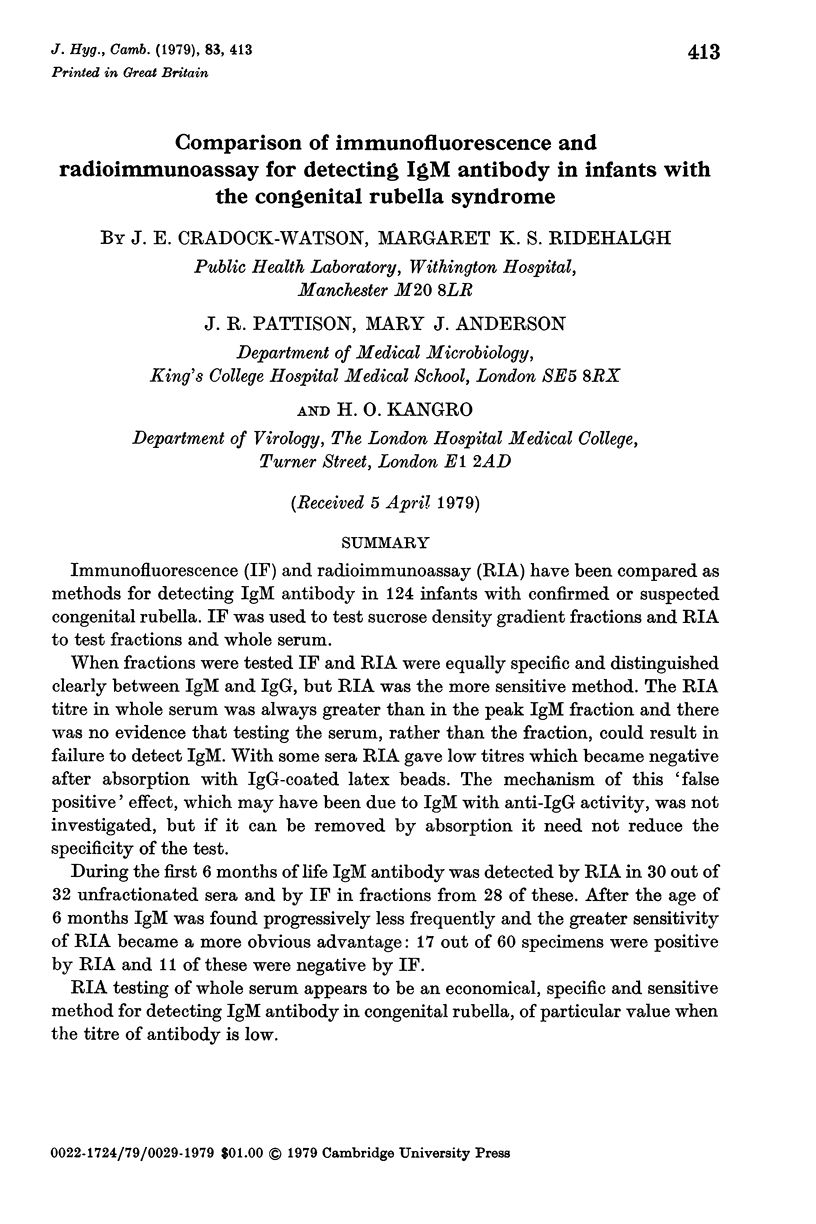
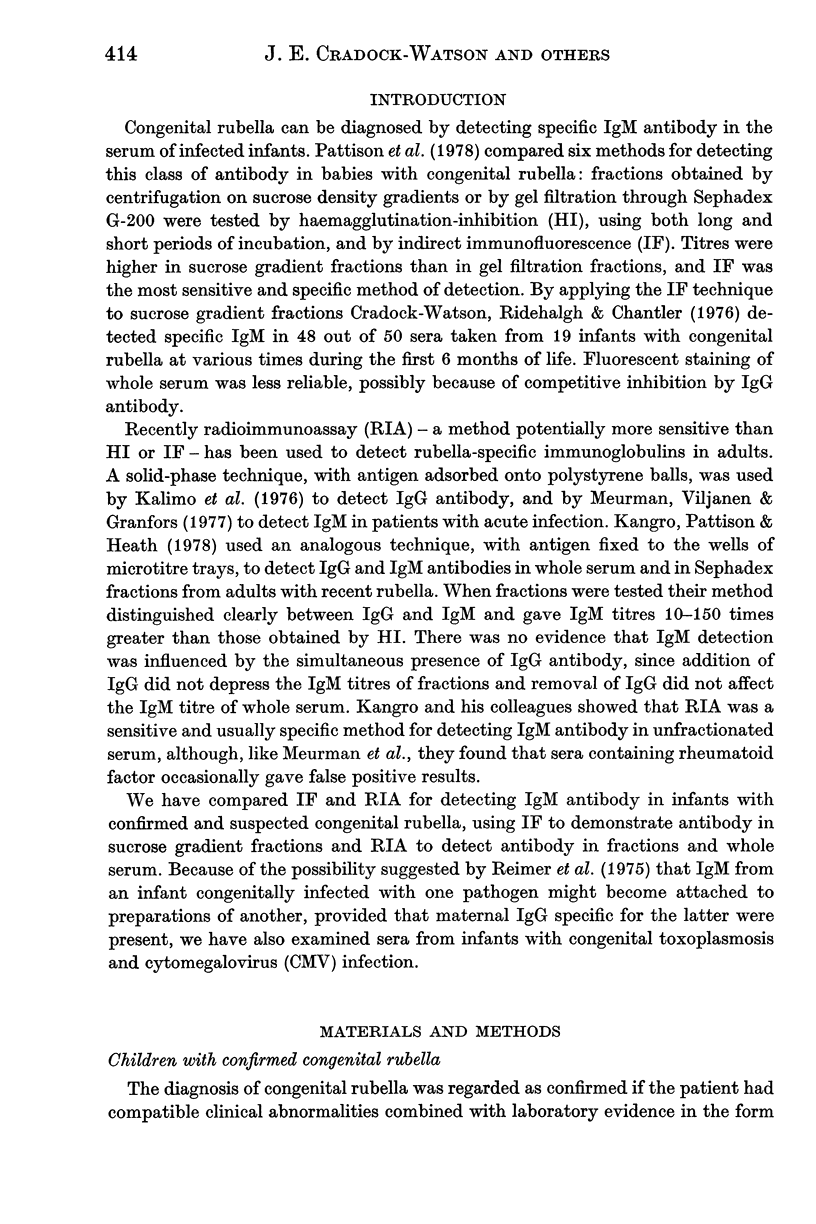
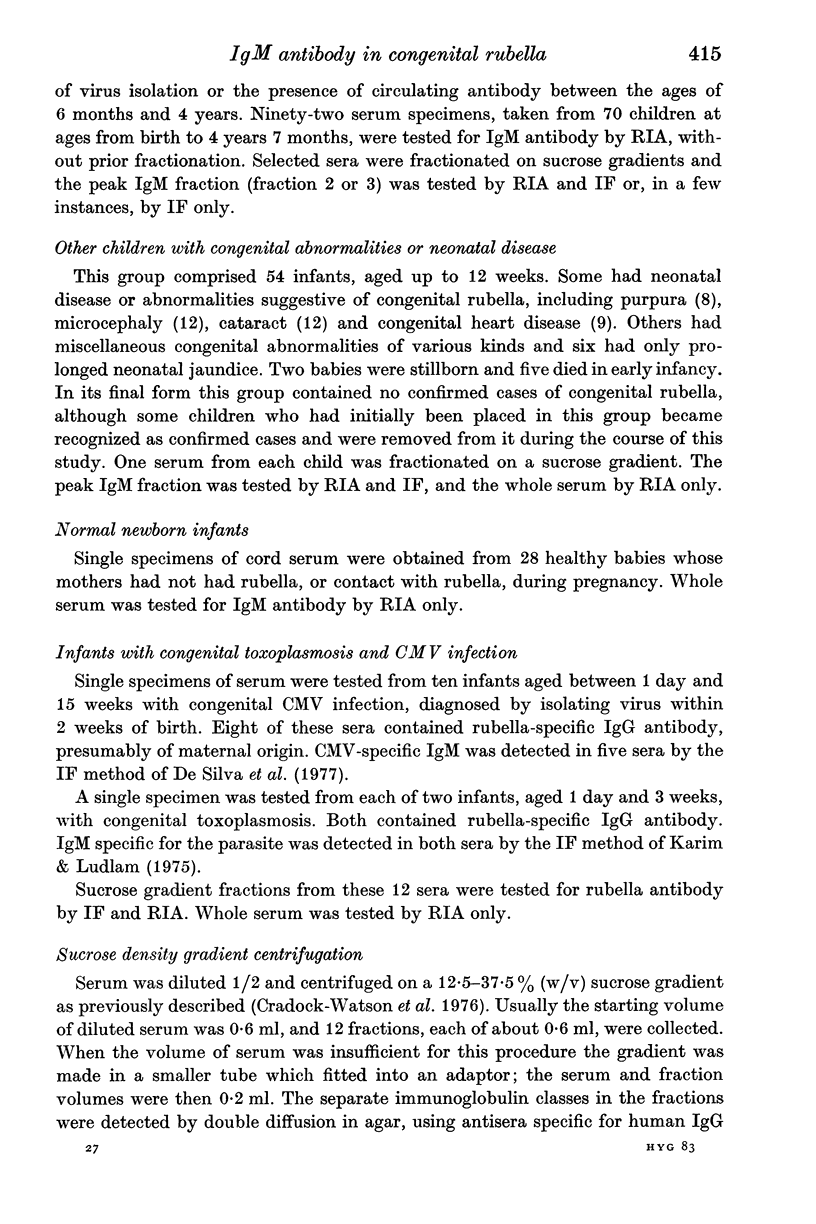
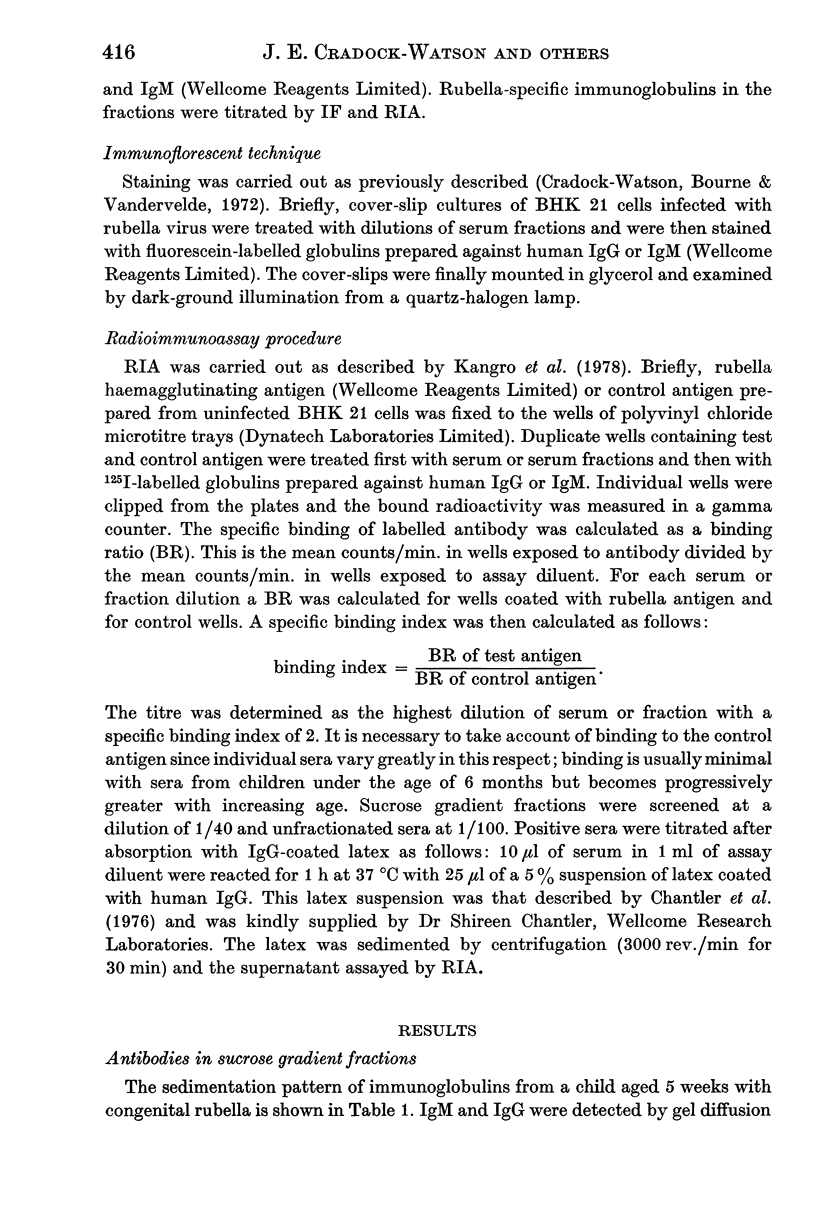
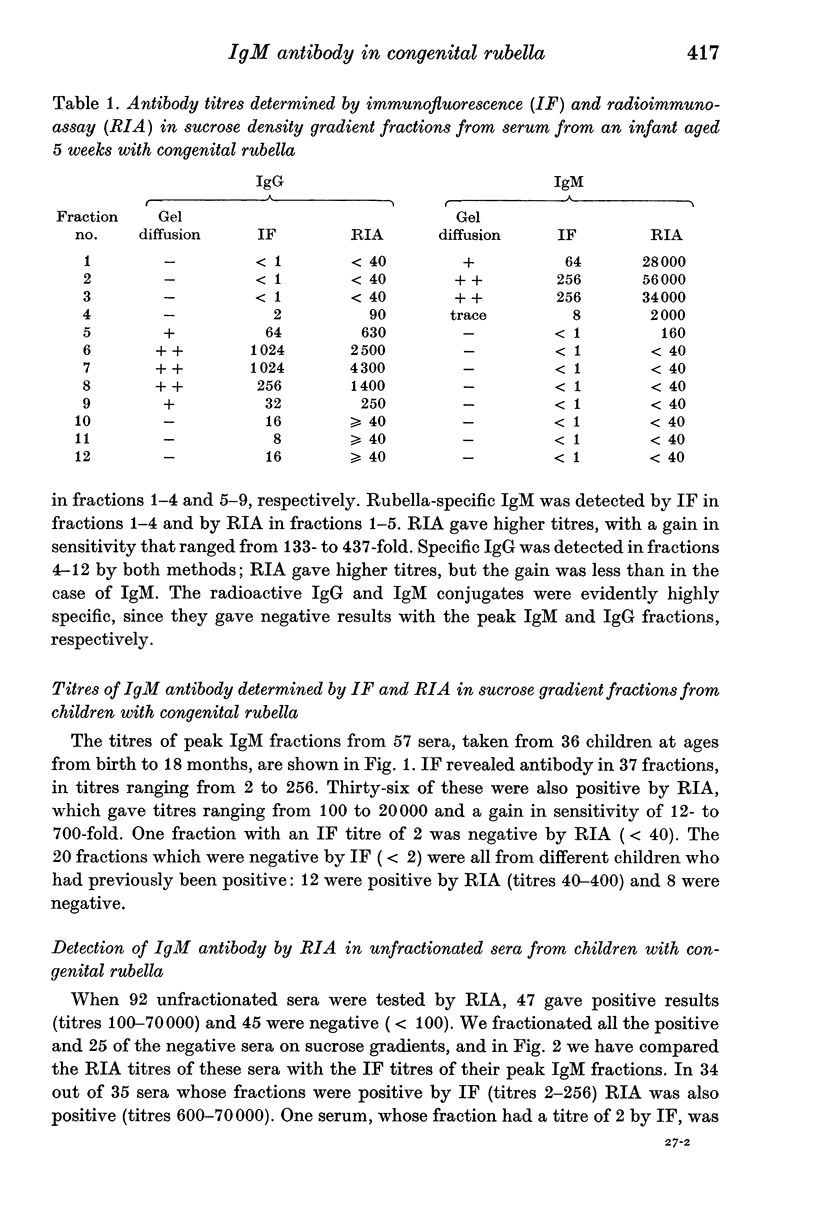
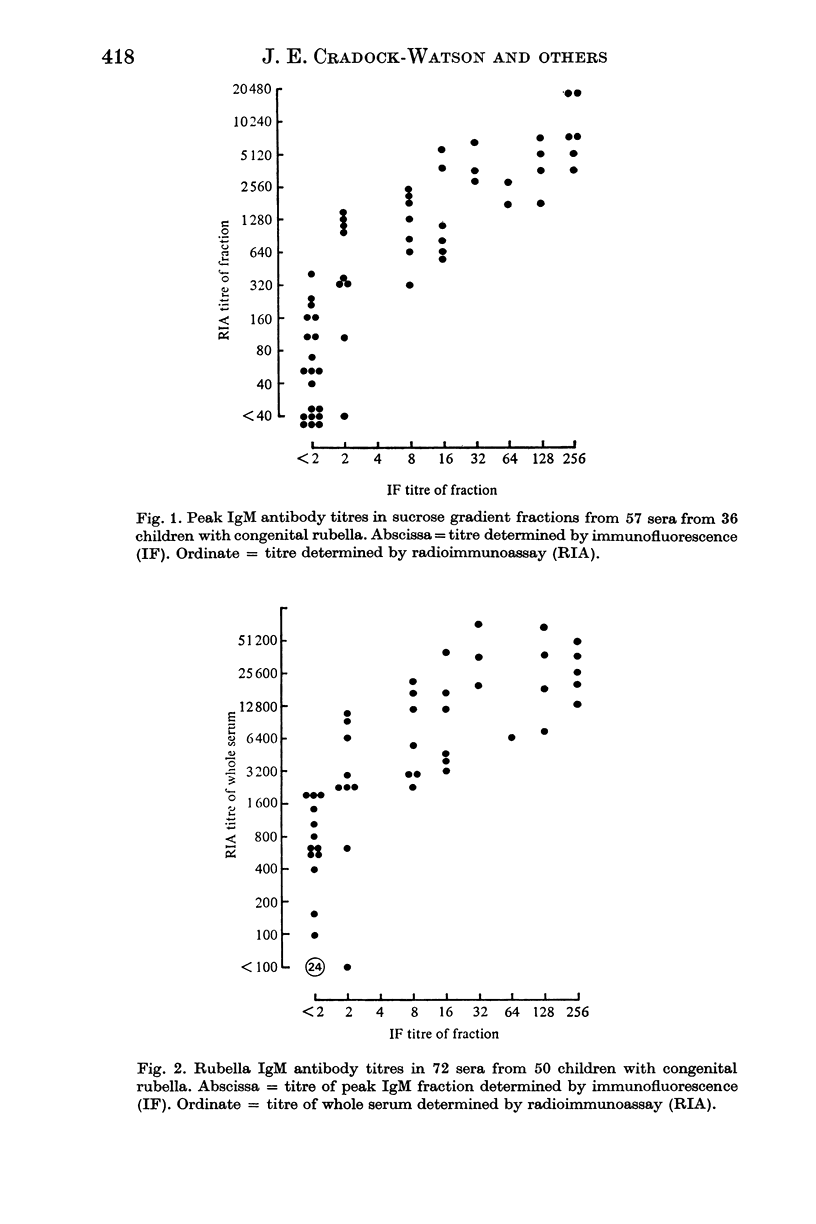
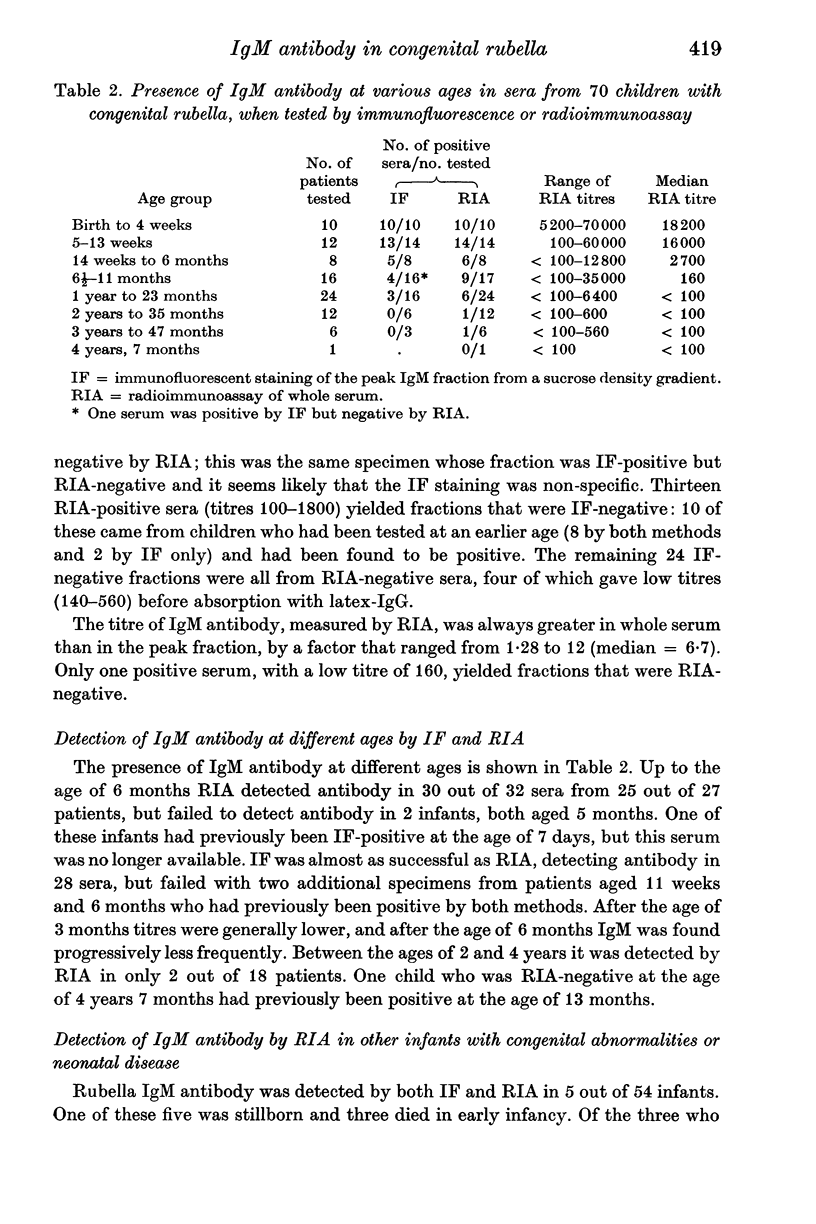
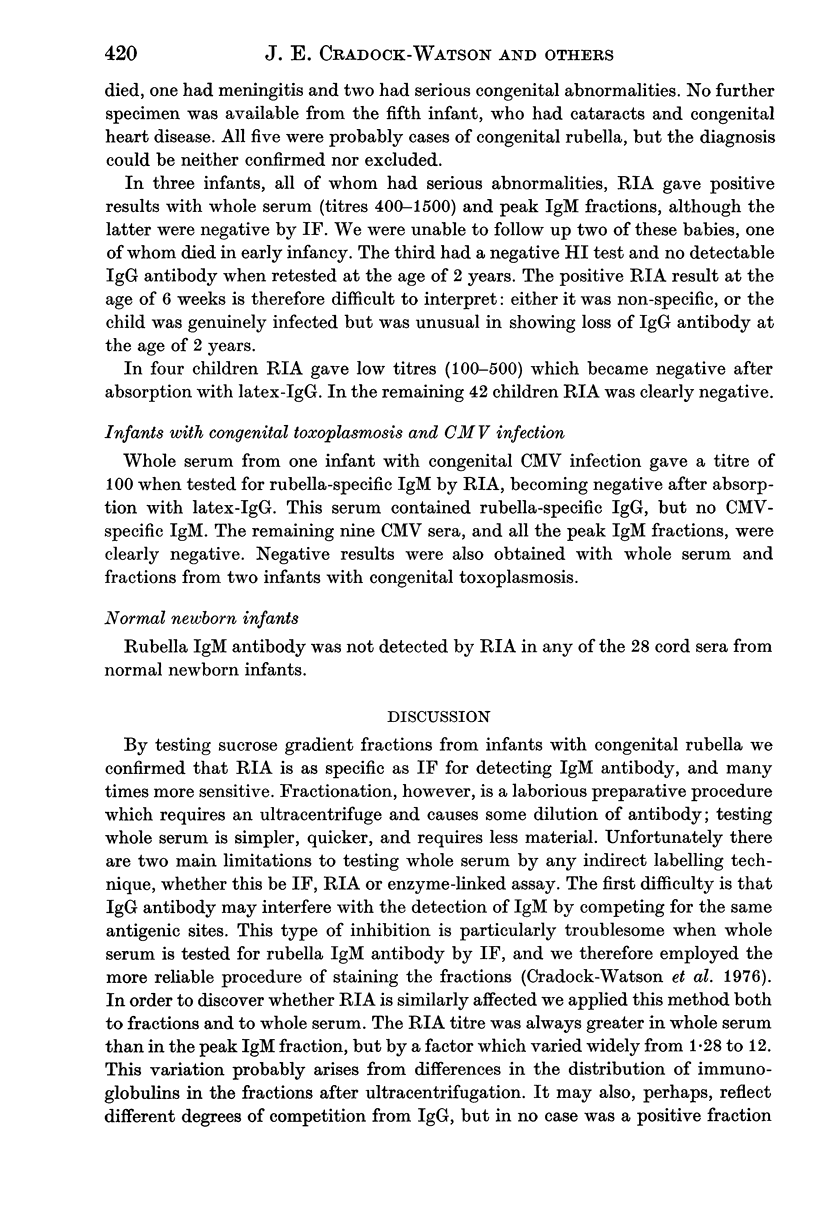
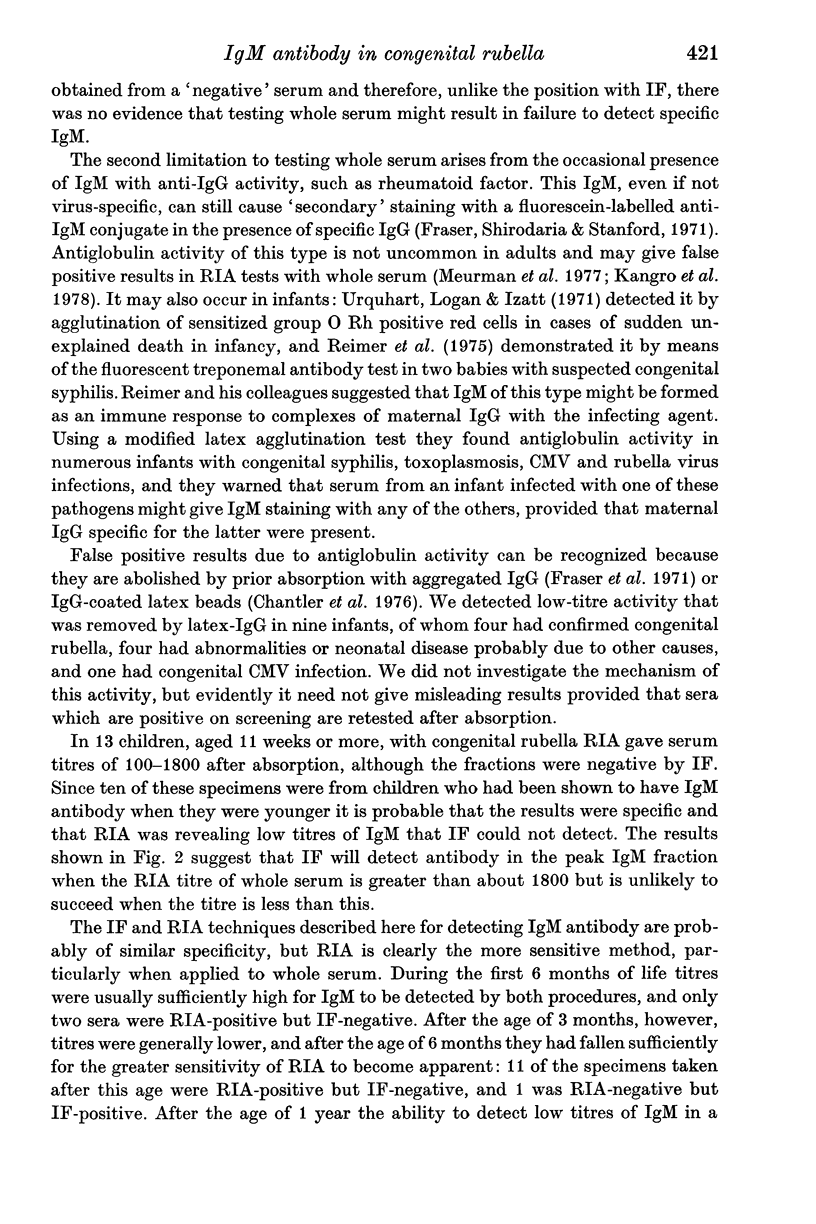
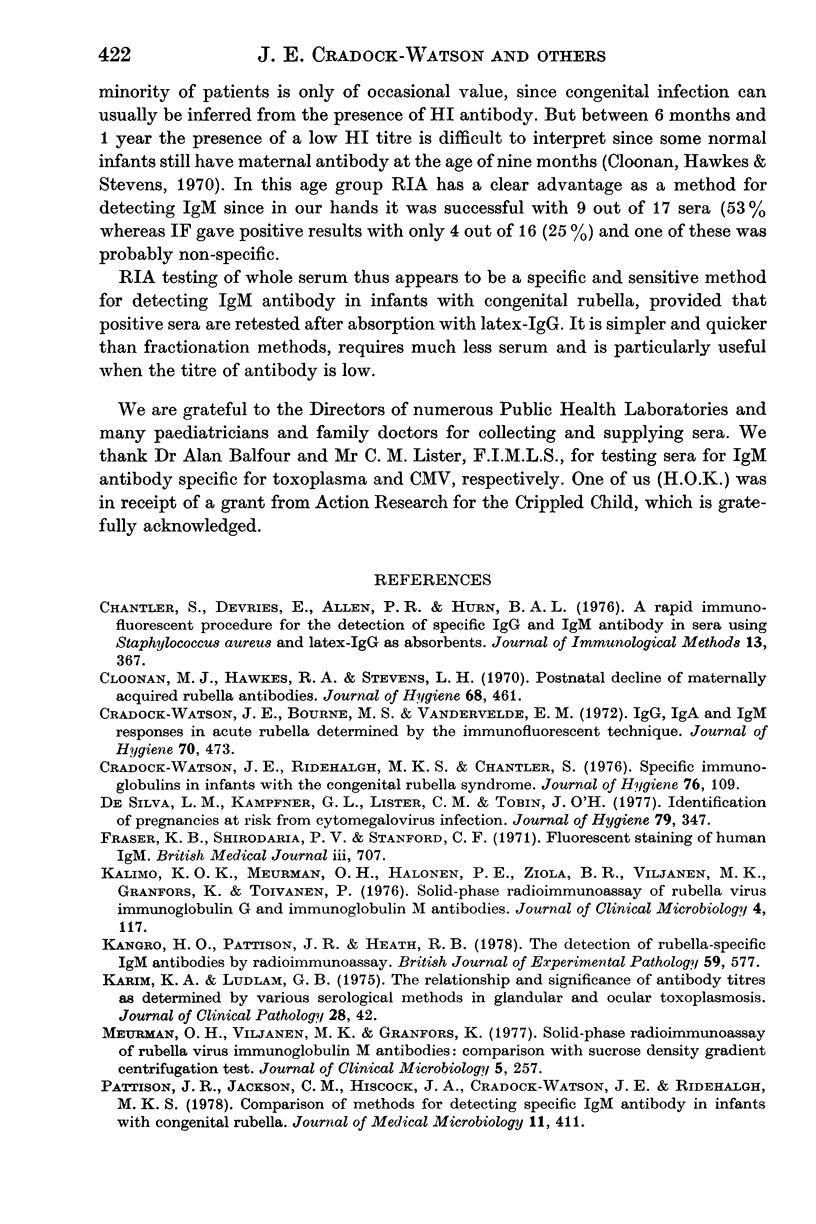
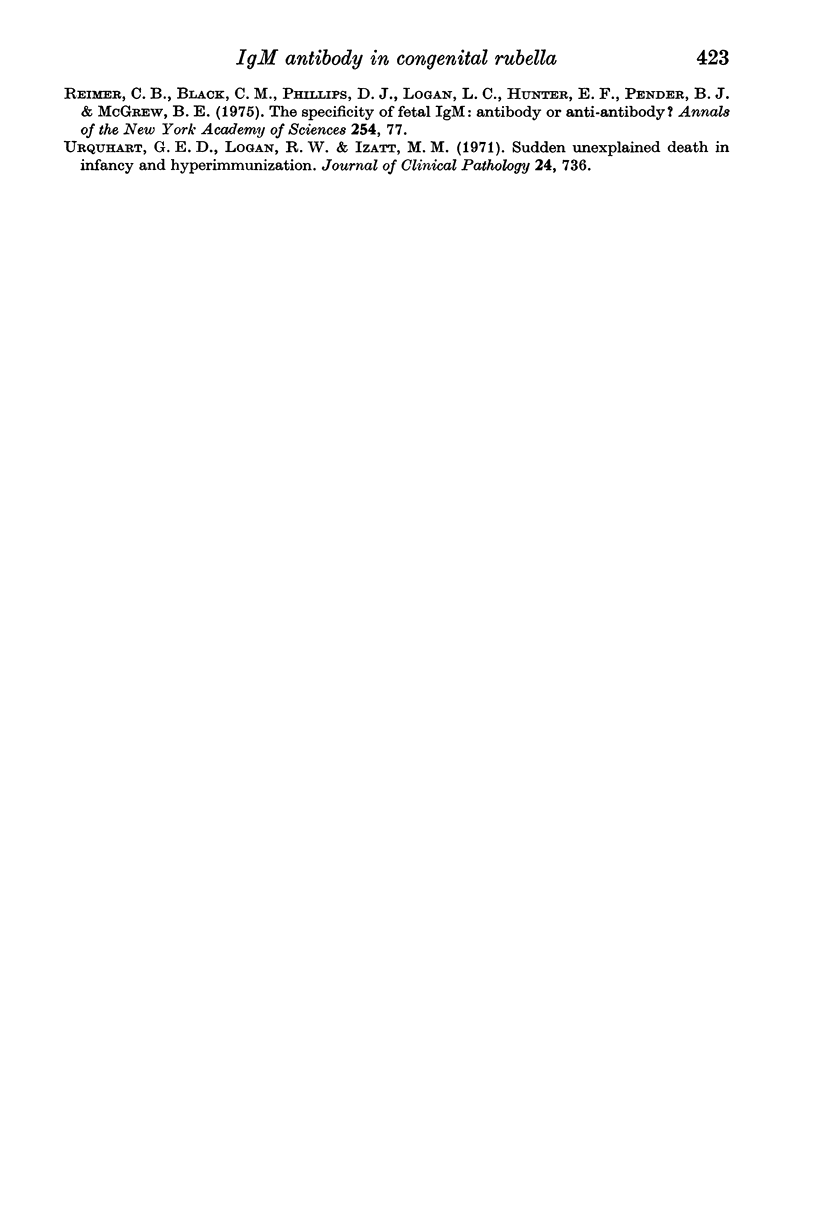
Selected References
These references are in PubMed. This may not be the complete list of references from this article.
- Chantler S., Devries E., Allen P. R., Hurn B. A. A rapid immunofluorescent procedure for the detection of specific IgG and IgM antibody in sera using Staphylococcus aureus and latex-IgG as absorbents. J Immunol Methods. 1976;13(3-4):367–380. doi: 10.1016/0022-1759(76)90083-1. [DOI] [PubMed] [Google Scholar]
- Cloonan M. J., Hawkes R. A., Stevens L. H. Postnatal decline of maternally acquired rubella antibodies. J Hyg (Lond) 1970 Sep;68(3):461–468. doi: 10.1017/s0022172400042364. [DOI] [PMC free article] [PubMed] [Google Scholar]
- Cradock-Watson J. E., Bourne M. S., Vandervelde E. M. IgG, IgA and IgM responses in acute rubella determined by the immunofluorescent technique. J Hyg (Lond) 1972 Sep;70(3):473–485. doi: 10.1017/s0022172400063063. [DOI] [PMC free article] [PubMed] [Google Scholar]
- Cradock-Watson J. E., Ridehalgh M. K. Specific immunoglobulins in infants with the congenital rubella syndrome. J Hyg (Lond) 1976 Feb;76(1):109–123. doi: 10.1017/s0022172400055005. [DOI] [PMC free article] [PubMed] [Google Scholar]
- Fraser K. B., Shirodaria P. V., Stanford C. F. Fluorescent staining and human IgM. Br Med J. 1971 Sep 18;3(5776):707–707. doi: 10.1136/bmj.3.5776.707. [DOI] [PMC free article] [PubMed] [Google Scholar]
- Kalimo K. O., Meurman O. H., Halonen P. E., Ziola B. R., Viljanen M. K., Granfors K., Toivanen P. Solid-phase radioimmunoassay of rubella virus immunoglobulin G and immunoglobulin M antibodies. J Clin Microbiol. 1976 Aug;4(2):117–123. doi: 10.1128/jcm.4.2.117-123.1976. [DOI] [PMC free article] [PubMed] [Google Scholar]
- Kangro H. O., Pattison J. R., Heath R. B. The detection of rubella-specific IgM antibodies by radioimmunoassay. Br J Exp Pathol. 1978 Dec;59(6):577–583. [PMC free article] [PubMed] [Google Scholar]
- Karim K. A., Ludlam G. B. The relationship and significance of antibody titres as determined by various serological methods in glandular and ocular toxoplasmosis. J Clin Pathol. 1975 Jan;28(1):42–49. doi: 10.1136/jcp.28.1.42. [DOI] [PMC free article] [PubMed] [Google Scholar]
- Meurman O. H., Viljanen M. K., Granfors K. Solid-phase radioimmunoassay of rubella virus immunoglobulin M antibodies: comparison with sucrose density gradient centrifugation test. J Clin Microbiol. 1977 Mar;5(3):257–262. doi: 10.1128/jcm.5.3.257-262.1977. [DOI] [PMC free article] [PubMed] [Google Scholar]
- Pattison J. R., Jackson C. M., Hiscock J. A., Cradock-Watson J. E., Ridehalgh M. K. Comparison of methods for detecting specific IgM antibody in infants with congenital rubella. J Med Microbiol. 1978 Nov;11(4):411–418. doi: 10.1099/00222615-11-4-411. [DOI] [PubMed] [Google Scholar]
- Urquhart G. E., Logan R. W., Izatt M. M. Sudden unexplained death in infancy and hyperimmunization. J Clin Pathol. 1971 Nov;24(8):736–739. doi: 10.1136/jcp.24.8.736. [DOI] [PMC free article] [PubMed] [Google Scholar]
- de Silva L. M., Kampfner G. L., Lister C. M., Tobin J. O. Identification of pregnancies at risk from cytomegalovirus infection. J Hyg (Lond) 1977 Dec;79(3):347–354. doi: 10.1017/s0022172400053183. [DOI] [PMC free article] [PubMed] [Google Scholar]


